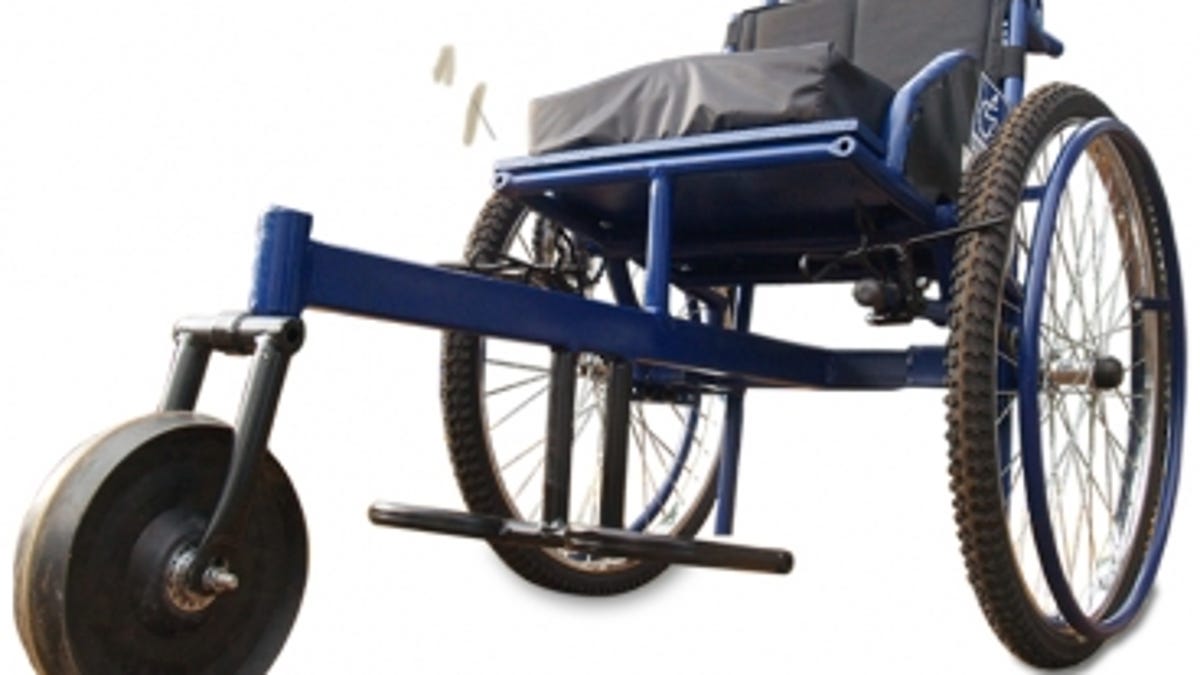'Freedom' chair: Part desk chair, part mountain bike
After three weeks testing his invention in Africa, an engineer at MIT unveils the "Leveraged Freedom Chair," which features two large levers attached to a bicycle drivetrain for rough terrain.

After spending most of January in East Africa testing his invention, MIT mechanical engineering doctoral candidate Amos Winter has unveiled the Leveraged Freedom Chair, which is something of a desk chair/mountain bike hybrid--"something you can comfortably sit in all day and maneuver around the office, but also use to efficiently commute to and from work."
If you're wondering if you can maneuver in the chair while charging your iPad, this one's not for you. Winter and a team of MIT undergrads and international design collaborators designed the LFC "for people who grew up in a village where they were literally dragging themselves to school."
Some 20 million people in developing countries require wheelchairs, according to the U.S. Agency for International Development, and the chairs that are available aren't designed for people who need to push through muddy roads and paths.
Winter has studied wheelchair production in Third World countries since 2005 and estimates that 70 percent of those requiring wheelchairs live in rural areas where regular ones just don't work.
After testing prototypes for four months, Winter is using a $50,000 grant he recently won from the Inter-American Development Bank to tweak the current design as he prepares for large-scale production, which he hopes will provide local manufacturers with the tools to build hundreds of chairs per month, thereby boosting local economies.
Users can change their mechanical advantage in the chair by moving the hand position of two levers located on either side of the chair, going fast on flat ground or producing enough torque to travel over sand or through mud. The levers are removable and hook into a simple bicycle drivetrain converted to the wheelchair using readily available bike parts, so that building and repairing the chair is possible with a hacksaw, welder, drill, and vice.
Winter says in MIT's news report that after testing the chair recently, he learned that though it is more efficient than a regular wheelchair at plowing through mud and over stones, he still needs to make the chair lighter by lowering the seat four inches and shifting the wheels back two inches, eliminating the need for bulky mounting brackets that attach the rear wheels to the chair.
Abdullah Munish, a Tanzanian spinal injury survivor who lives in a hilly town with rough roads and who has tested various wheelchairs during the past decade, tells Winter that the chair is "strong and stable in African terrain, and you can travel long distances and uphill without using too much energy.
"I would say that we have [a] life saver...I just call it my little angel machine," Munish said.

